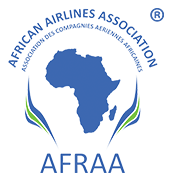Safran launches Landing LifeTM, a single brand grouping all landing and braking system support services
Safran Landing Systems is launching Landing LifeTM, a single brand designed to promote and clarify
its full range of customer support services for landing gears, wheels, brakes and associated systems.
All of these services have been grouped in a user-friendly customer portal.
Addressing operators, maintenance centers and leasing companies, Landing LifeTM was designed
around three main objectives: keep planes flying, reduce the total cost of ownership and foster the
sharing of expertise – all to maximize the user experience and customer satisfaction.
Using the intuitive Landing LifeTM portal, customers can immediately identify the appropriate solution
for their needs, request emergency assistance in AOG (Aircraft on Ground) situations, search for
information by product or aircraft type, consult technical publications, make online reservations for
training sessions and contact Safran’s experts.
Landing LifeTM also offers new digital services that facilitate access to the company’s experts, such
as “Expert Link”, a video assistance application that allows the customer’s technicians, using a tablet
or even just a smartphone, to consult Safran Landing Systems’ support teams on any issues they
may have. Whether out on the tarmac or in the shop, all communications are via a secure link.
Advanced data analysis services, a key growth factor, allow the company’s experts to provide
operational recommendations to operators. These recommendations help improve equipment
management efficiency, reduce maintenance costs (especially based on predictive maintenance)
and avoid flight cancellations.
Landing LifeTM draws on a vast international network with nearly a dozen MRO (maintenance, repair
and overhaul) centers, operating 24-7 in all main regions around the world, including a guaranteed
response time within four hours in AOG situations.
“Being able to count on responsive, reliable and cost-effective support services is an imperative for
our customers, and all the more so under current conditions,” said Cédric Goubet, Chief Executive
Officer of Safran Landing Systems. “Landing Life delivers a slate of services developed jointly with
our customers. Along with our role as OEM, which covers the entire lifecycle of landing and braking
systems, that enables us to provide solutions tailored to the operational needs of our customers,
while also continuously improving their user experience.”
Source: Safran
